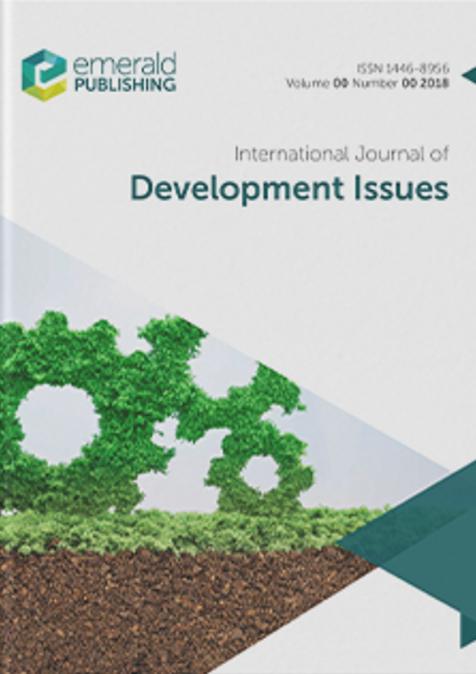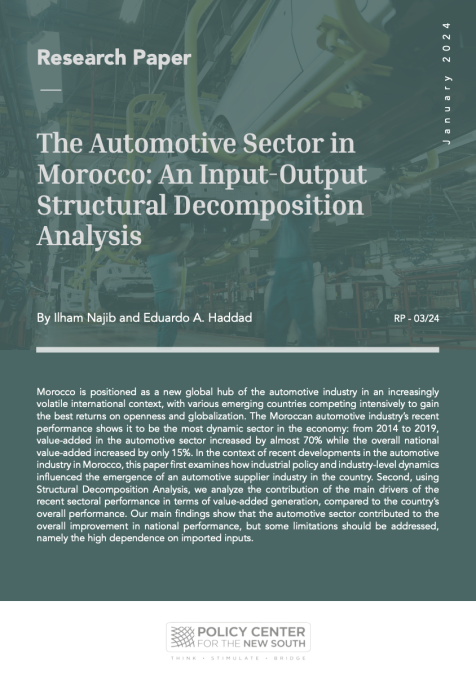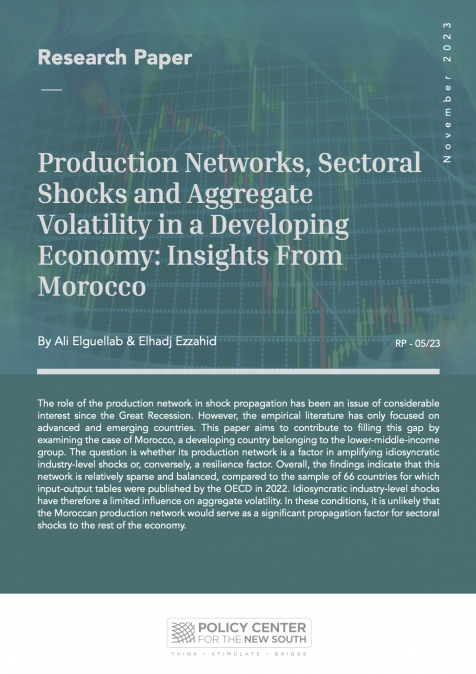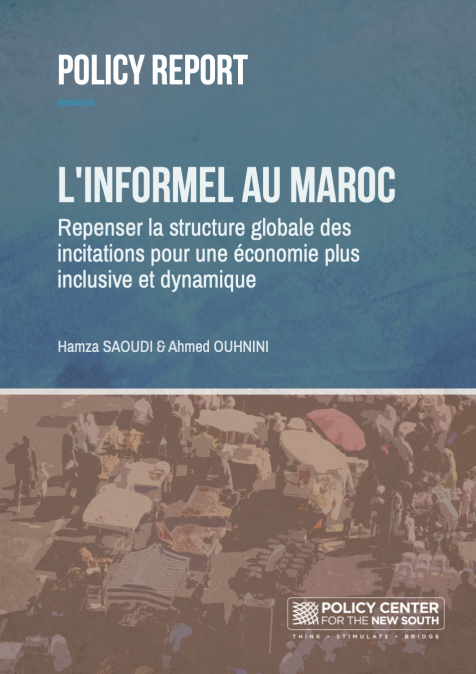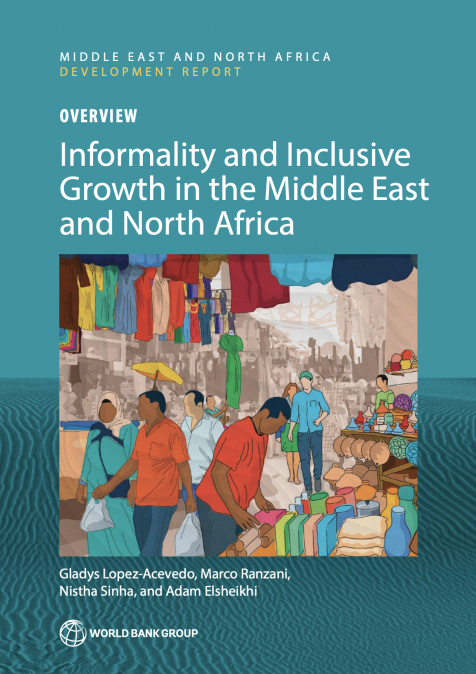Publications /
Paper in Academic Journals
This Paper was originally published on emerald.com
Purpose
This paper examines the dynamics of structural transformation in Morocco since 1970 by analyzing input-output tables expressed in terms of employment and output levels across 24 sectors.
Design/methodology/approach
This study employs a twofold methodological approach. Firstly, it examines the evolution of sectoral employment shares over time using World Bank data. Secondly, it utilizes Input-Output analysis to examine structural shifts in Morocco's economy, focusing on sector-specific output and employment data. The primary data source is the Eora Global Supply Chain Database, covering the years 1970, 1980, 1990, 2000, and 2015. Additionally, to transition from production-based to employment-based input-output tables, the study leverages employment and output data from the Penn World Tables to calculate the diagonal labor coefficient matrix.
Findings
First, our analysis reveals that Morocco's economic transformation has been slower compared to high-income countries. Structural changes, as evidenced by the evolution of employment shares by sector, show a gradual decline in agricultural employment share over the period 1991-2019, accompanied by a shift towards the services sector. This shift, driven by favorable conditions in the services sector and increased capital use in agriculture, has resulted in premature deindustrialization. The industrial sector's employment share has remained stable due to its capital-intensive nature. Second, Input-Output analysis reveals a pronounced premature tertiarization of the Moroccan economy. Between 1990 and 2000, the tertiary sector saw a dramatic rise in both backward (167%) and forward (68%) linkages, while the primary sector's backward linkages fell by 33% during the same period. Although the primary sector’s linkages increased by 10% from 2000 to 2015, the secondary sector experienced a consistent decline in backward linkages, dropping 12% from 1990 to 2000 and an additional 10% from 2000 to 2015. Employment linkage analysis further underscores this shift, with a 12% increase in the tertiary sector’s backward linkages from 1990 to 2000, contrasted by significant declines in the primary (51%) and secondary (7%) sectors. These trends highlight an unsustainable move towards services without concurrent industrial development, challenging balanced economic development.
Originality/value
As it is unanimous, the structural transformation of Morocco remains relatively slow and characterized by a shift of the labor factor from the primary sector to the tertiary sector, with a limited job creation by the secondary sector considered as the pillar of any structural transformation. This paper advances the field of research on structural transformation by elucidating the premature tertiarization of the Moroccan economy and the slowness pace at which the transformation of its economic fabric is occurring, thereby filling the empirical gap.

